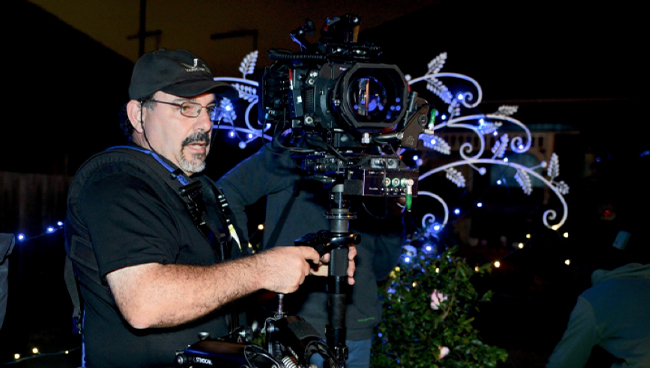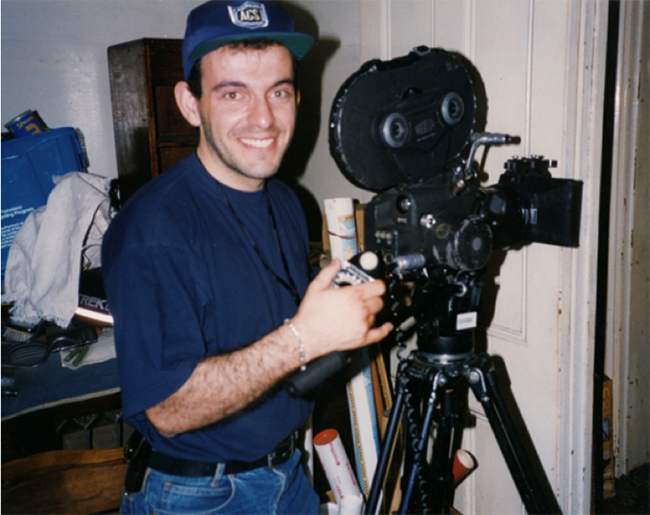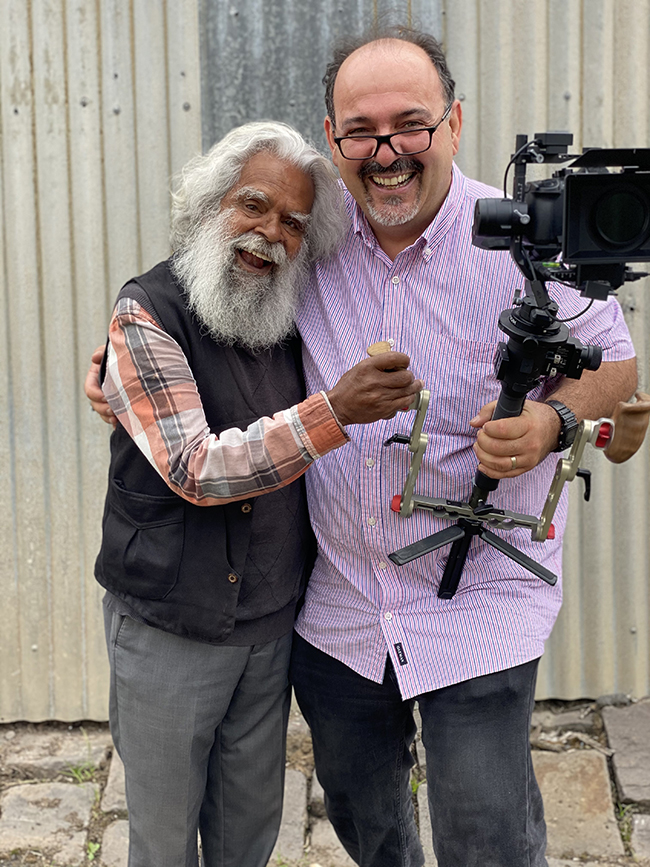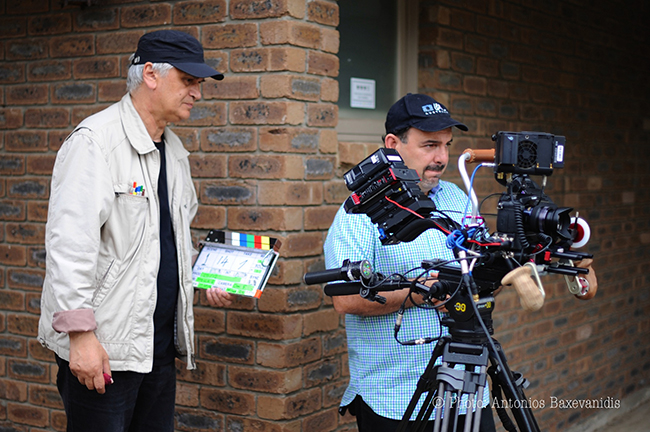
Meet Con Filippidis, a professional in the film and television industry since the early 90s. As a freelance Director of Photography (DoP), cinematographer, and camera operator, he has worked on diverse range of projects including dramas, TV series, TV commercials (TVCs), and corporate/web videos. With an unwavering passion for cinematography, Con keeps pace with the latest advancements and technologies in this ever-evolving field. His motto, “You never stop learning,” embodies his dedication to continuous improvement and keeping the job interesting.
Q: How did you get into cinematography in the first place?
I remember my first attempt at shooting something in high school. I was entrusted to shoot footage of the rocket club launching rockets. It was a reel-to-reel black & white video camera package. I didn’t know it at the time, but the seed must have been sown then. It took a long time for the seed to sprout, though. I bought my first video camera in the mid-1980s, which was a National/Panasonic A2 camera with VHS porta-pack. I really didn’t know what I was doing then, so I decided to take a few part-time courses to learn more and hopefully gain access to more professional gear.
After a stint in regional TV, studying at RMIT and then working at Monash University Caulfield, I decided to go freelance in 1998 (till the present day). I managed to work as the DoP/camera operator on some low budget features on 16mm film and some short films too in those early days of freelancing. Unfortunately, there is no money in those projects, so I gravitated to working in TV and Corporates to earn a living. I love the variety and challenges presented with each job. Experience counts a lot in my book, and it helps to see you through the difficult ones.

Q: What are the challenges you often face when shooting film/TV series? Is there any lesson/experience that is very important/ memorable for you?
In filmmaking, you have to be a good problem solver and be able to think on your feet. I believe it’s the top trait you need to survive in this industry. Second only to that is preparation. Whether it’s shot listing, storyboarding with the director for an upcoming short film, or doing camera prep the day before a shoot, the more prep you put in, the smoother the shoots go. But even with thorough preparation, things can change or go wrong. That’s where you must think on your feet and solve whatever problem may arise.
For example, on one project, the actor twisted their ankle in the previous shot, and we needed them to run across the field for the next shot. We ended up putting them on the dolly and getting them to wave their arms around like they were running. Unbelievably, with the right camera angle, it worked, and we salvaged the scene.
Q: How did you overcome the challenges and what are the tips for people start learning about filmmaking?
One thing I must emphasize is that you really need to love this job, be thick-skinned, and persistent. Moreover, don’t underestimate the value of starting from the bottom and working your way up. That is a university in itself. Working as a camera assistant, I learned so much from the handful of great Dop’s/ Cinematographers in action. It all went into the filing cabinet in my head. Then, one day when faced with something I personally had not done yet, I could draw upon my experiences with other cinematographers as an assistant who had successfully tackled similar challenges. That’s the master-apprentice model: working under a more experienced person in your field and learning from them.
You take something from everybody you’ve worked with and develop your own style and way of doing things over time. Of course, formal film school training is valuable, but in my opinion, the above approach is just as important.

Q: How does the equipment play a role to you? What is your favourite gear and why?
A master must know their tools and how to use them. Therefore, while equipment plays a major role in one’s craft, it’s always the person behind the camera who makes the shot, not the camera itself. In other words, an experienced DoP/Cinematographer can make anything look good using any camera. A less experienced one using the most expensive camera package doesn’t always guarantee the same result, in my opinion.
So yes, get to learn all the gear related to your job from cameras, lenses, lights, grip equipment etc. but also learn about art, life, composition, and framing. Understanding the politics and hierarchy of a film set, knowing who does what and the chain of command, is also crucial. All of this can take years to learn and develop, but don’t let that discourage you. Like any craft, you need to put in your 10,000 hours to become a master at it. My favourite gear, of course, is the camera I’m using for any particular job followed by the lighting fixtures. I love to light, and the camera allows me to capture the light I have painted in the frame.
Q: You have worked with products including VariCam, EVA1 and LUMIX GH cameras for many years. What is it about Panasonic that keeps you coming back?
As a freelance DoP/Cinematographer, I have to worked with many brands of cameras from Film (Kodak Super 8, 16mm & 35mm), ENG/EFP, handheld camcorders and Cinema Digital Cameras of various price ranges and feature sets. The thing that always made me gravitate towards Panasonic cameras like the ones mentioned above was the colour science. I found Panasonic cameras gave beautiful colour skin tones especially with the Varicams. Having said that the other thing I liked is that I could shoot a multicam shoots with a Varicam, EVA-1 and BGH-1 or GH5 and all the cameras would match easily when shooting in V-Log. The colour science was more to my palette than the other brand of cameras so I stuck with Panasonic for many years.
Q: A common mistake with people using LOG profiles and not capturing correctly in-camera, which results in noise, poor skin tones, and poor dynamic range. Do you have any tips for filmmakers starting to shoot in V-Log (log gammas)?
When shooting in LOG profiles, there’s no real trick, in my opinion. I always monitor with the view assist (REC 709 LUT) on. This way, I’m looking at a normal picture all the time. My philosophy from the early days of shooting in Log is that if I can make the REC709 LUT picture look good, then I am 80-90% there in the grade with the LOG image. If it looks underexposed or overexposed, then it probably is in the LOG image too.
Using the correct LUT for the type of LOG you’re shooting is crucial, as it may give you erroneous results when you get back to the editing suite. I use the manufacturer’s recommended REC709 LUT for the specific LOG and camera that I’m using. I don’t use other people’s LUTs or personalized LUTs. I do all that in the grade later.
As a DoP/Cinematographer, my job is to capture the image at its best and with lighting that reflects the intent and emotion of the scene. The grade is where I fine-tune all that to realize the final vision the director wanted. Sometimes I leave things for post to finesse because I know I can do it quicker and easier there than on set. That’s why it’s important that the DoP always be allowed to be involved in the grade. Disaster can strike when other people take the grade in a direction the DoP never intended.

A perfect example is if the DoP lit an intimate scene so the subjects were meant to be in silhouette. If the DoP is not present to tell the colorist that that was the intention, then they might think, “Oh, this scene is very dark or underexposed,” and try to lift the blacks, which also lifts the noise as well. Communication is imperative, even if the DoP/Cinematographer can’t be there themselves. The intent needs to be communicated. Then and only then is the DoP’s job completed, not just at the end of the shoot.
Q: Do you have any exciting projects coming or any plan to further develop your passion?
Currently, there are no major projects on the horizon, but that could change at any time. Such is the nature of freelance world. I’m constantly researching new gear online trying to keep abreast of new technologies or gear that can enhance my craft and storytelling options. It is getting harder and harder to keep up with everything because there is always something new announced at every trade show throughout the year and in between them as well. Nevertheless, you always have to keep your finger on the pulse; otherwise, you get left behind I’m afraid.

Younger people getting into filmmaking and cinematography these days are very lucky compared to when I started many decades ago. They have access to brilliant, affordable equipment that allows them to make films and learn through practice on a very small budget. Additionally, online resources are plentiful. You can find an answer to almost any question. However, it’s important to be cautious about the validity and accuracy of advice given by anyone online. Do your research from multiple sources and consider what aligns with industry practices.
Also, don’t forget the manual. Make sure to read it thoroughly.
